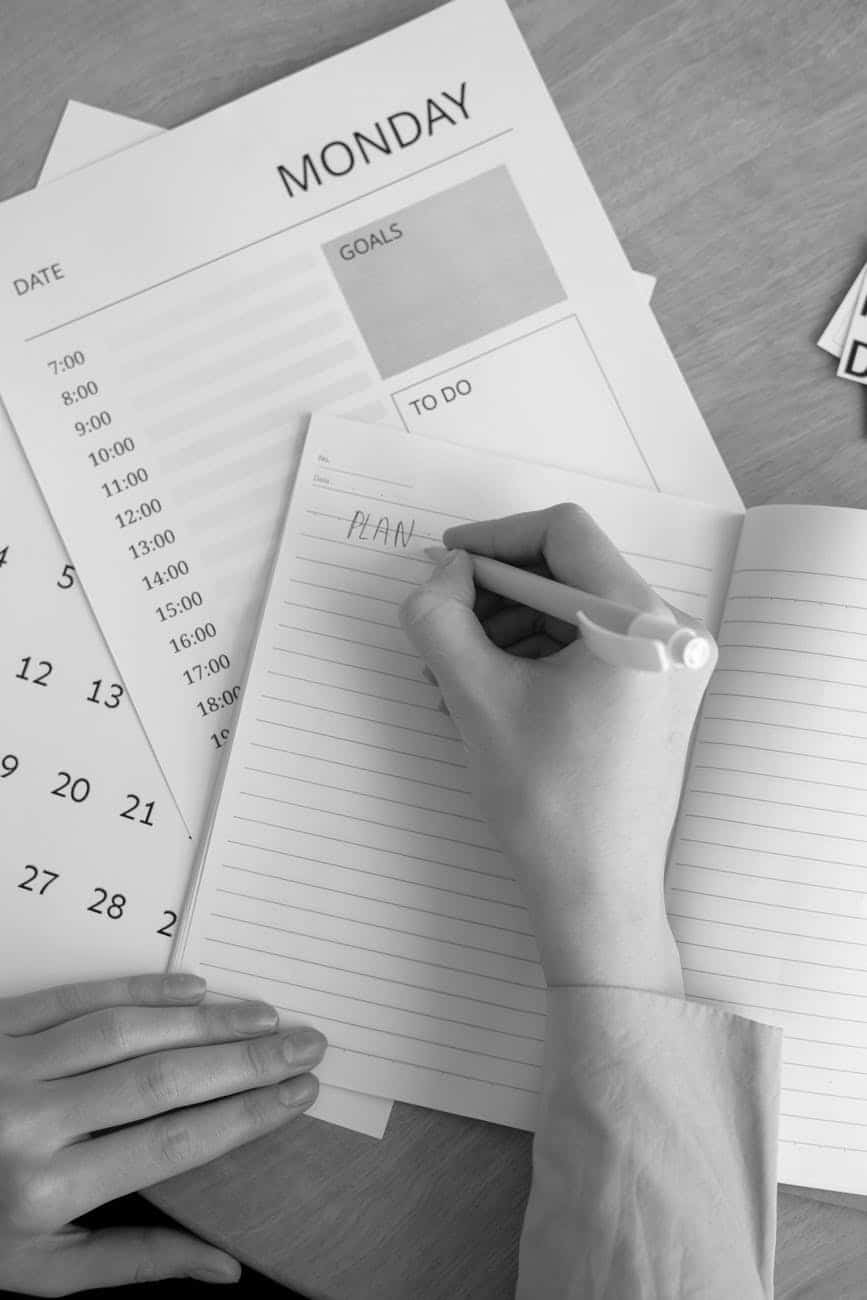MORE UNUSUAL GOAL-SETTING STEPS
Table of Contents
Pay attention to your behavior
Here are more goal-setting steps. Setting goals sometimes means breaking down the steps. And goals change depending on the task. Here are some more goal-setting steps. Most of us live our lives mindlessly, never paying attention to what we are doing, much less why we are doing it. In my book, Depression Has a Big Voice. Makes Yours Bigger! I have some pages focusing on our habits.
We often live our lives based on automatic behaviors that perhaps have served us well in the past but don’t now. Indeed, they may work against us now.
A couple of months ago, I looked at my schedule and realized it wasn’t working.
Changing schedules
Goal setting can encompass our schedules as well. I was getting up by seven, having my coffee while watching the news, getting dressed, making the bed, and then having devotions. Now, I set the clock for six, get dressed right away, make the bed, have devotions (with those cups of coffee), eat breakfast afterward while watching about twenty minutes of news. I start my day then. I usually write for about an hour, talk my walk or get on the treadmill. If I have errands to run, I concentrate them all on one day. (Now, with gas prices what they are, that was like a preemptive strike.) I love my new schedule. It was hard in the beginning but I knew my old habits were working against me reaching my goals.

We need to pay attention to how we live our lives and that means our habits. It isn’t easy to make changes. New habits are hard to make and old ones hard to break. And we may have to try a few different approaches before we figure out what new habits we need to develop. I highly recommend The Power of Habit, Atomic Habits, Eat That Frog, and Mini-habits.
I’ll bet there are some things you are doing more often than you need to because you’re on auto-pilot. You repeat them because you aren’t really aware of what you are doing. But take some time and pay attention to what you do each day. Remember, it’s all about meeting our goals so you don’t want to repeat tasks when it isn’t necessary.
breaking down goals
Simple Goals
Let’s face it, some goals are easier to make than others. It’s one thing to set a goal of, let’s say, organizing a closet or painting the closet. The steps would be different for both and the time involved would be different. Some goals are completed in a matter of minutes, the others might take hours. Painting a closest could be broken down into mini-steps but mini-steps might not be needed for organizing the closet.
Major goals, like painting a whole house would require a lot of steps along the way. But these are relatively easy compared to life-altering goals. For example, developing a new of relating to people.
Interpersonal goal setting
Let’s say you feel you have a tendency to agree easily with others when you really don’t. You’re a peacekeeper. (Mmmm, me.) And that’s not a bad thing, but if it makes you feel dishonest, then it’s not. Maybe your goal is to give your opinion from now on but you need to find a way to do it and still maintain peace. This kind of goal is not something, like a closet re-do, where you will see obvious results. It will take some time because it involves numerous people and circumstances.
You’ll need to break a goal this big into smaller pieces. If this were me, I would want to have some phrases ready to use. For example, “I’m not sure I agree with that”, or “I disagree….”I need some clarification”, “I feel differently about that” and so on. You would also need to decide what issues are important enough to you to make yourself heard. Maybe you’ll need to track how you do. It’s really the only way to know your progress.
We seldom equate growth issues with setting goals. I would suggest these issues are even more important.
Goal-setting matches size

Goal-setting needs to match the size of the task, meaning the larger the goal, the more it needs to be broken down into smaller steps. Spring tasks are good goal-setting projects.
Make a list of your major spring tasks. Leave some space so you can write the steps needed to be done and the order of them. Let’s say you need to restain your deck. Breaking it down might look like this:
Preliminary things to consider:
- Decide on color.
- How long will it take?’
- When will it be done?
- Will the deck need cleaning first?
- Are there repairs to make?
BUY:
- Cleaning supplies.
- Stain, brushes, etc.
- Dropcloths
DAY OF:
- Have dinner planned
- Remove furniture and clean
- Start early
- Store stain correctly if you need to take two days
- And, of course, other decisions surrounding family, pets, etc.
Finally, I think we have to be flexible. Any goal or plan may need “tweaking” no matter how careful we were in our planning.
Let’s not forget, God has goals for us as well. His over-reaching goals are the same for all of us but his individual goals are unique to each of us.
Tweet
Spring is a great time to practice setting goal-setting.
God bless you and stay healthy.

